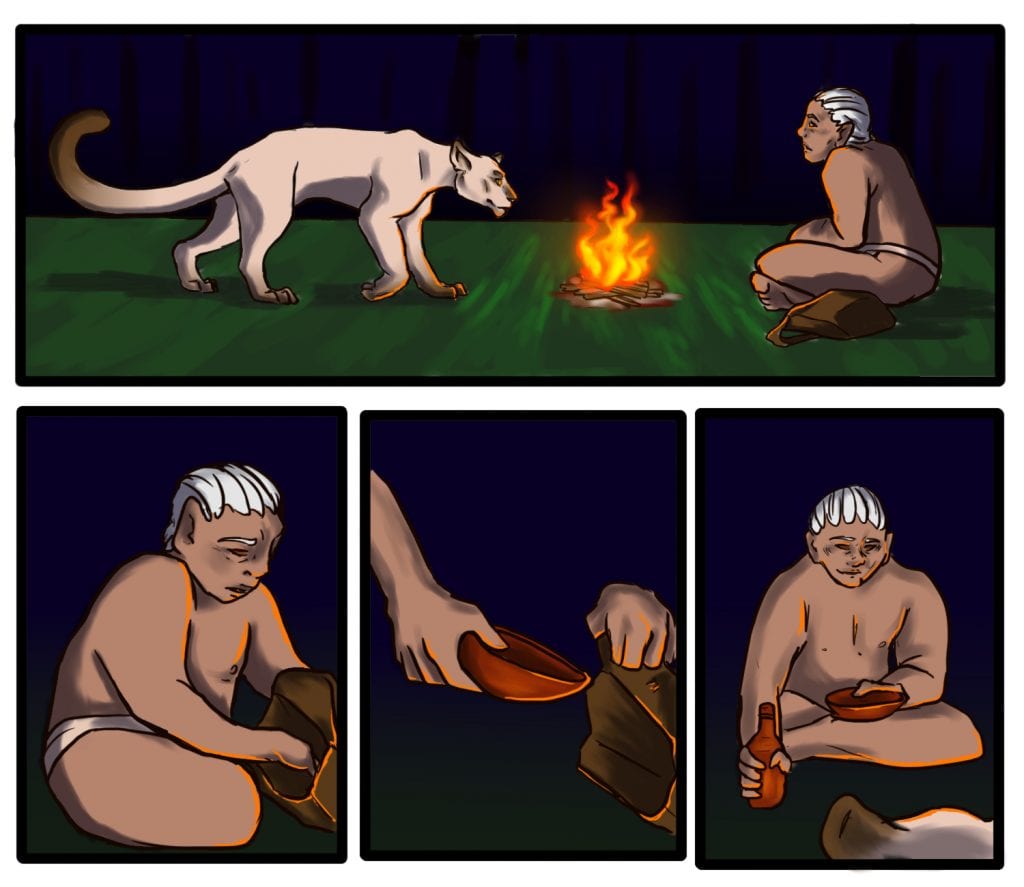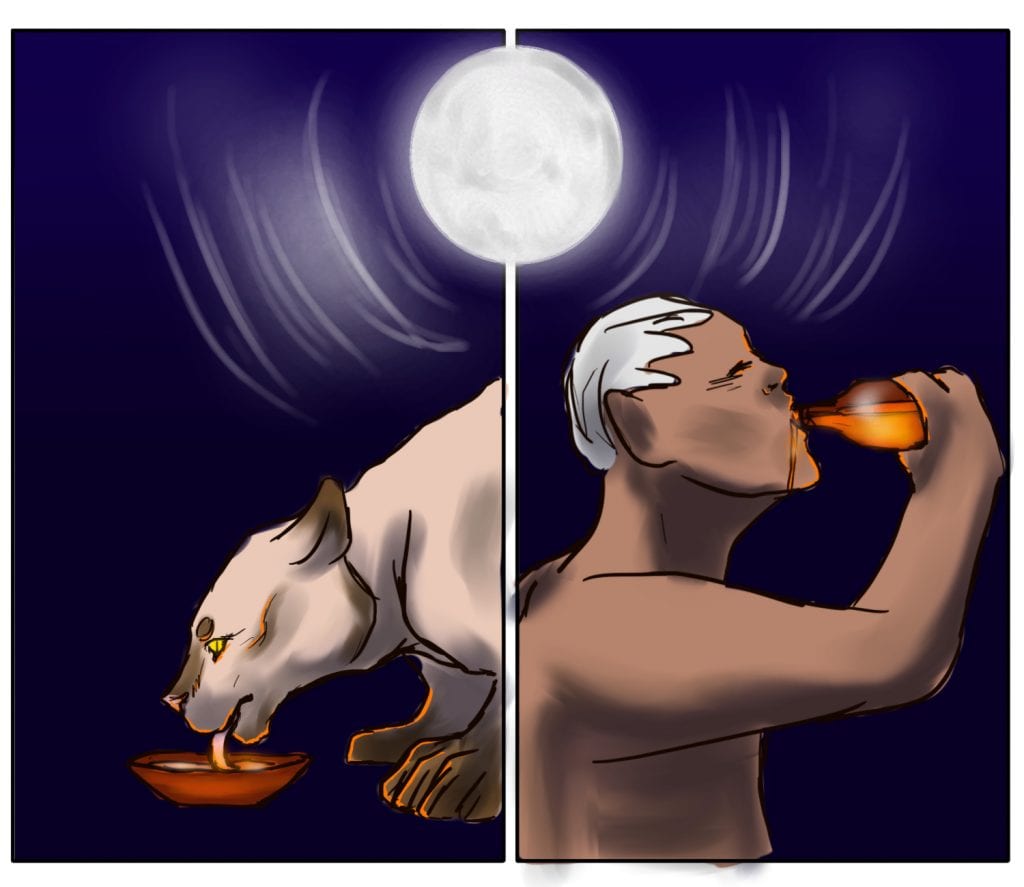A Meeting Between Old Rivals
Richard Beyer was an artist driven by his deep-rooted philosophy and a penchant for story telling that lead him to create a vast body of sculptural work. He was born July 26, 1925 in Washington D.C – his parents, Otto and Clara Beyer, were both governmental workers entrenched in the ideals of FDR’s “New Deal”. His parents upheld the ideals promoted at these times and passed them down to their son. These ideals focused on the benefit of the common worker and translated to a “[celebration of] things that make being alive worthwhile,” (“Richard Beyer Sculpture”) within his artistic work. Following high school, Beyer joined the Armed forces and was sent overseas to fight in Germany and France during World War II. It was this during this time fighting and bearing witness to such horrid violence that also engrained a conviction for peaceful solutions and pacifist practice into Beyer that would later work into the themes of his artwork as well and would also lead him to support political peace movements. When examining his work there does seem to be a softness to it – a lack of violence that instead speak backs to a celebration of life and the common people that rejects violence.
Beyer truly began his work as a sculptor after moving to Seattle with his family, upon which he began to further explore his interest in the natural world and its marriage to science in the form of geology. These fascinations are made plain when one examines any of his sculptures. Firstly, Beyer works in natural materials such as granite and cedar that would be cast in aluminum. The statue our group examines is also a carved granite geological abstraction that further reflects this fascination and focus. Beyer’s other works also express the themes of the natural world that take a whimsical humorous nature that a large audience would enjoy – which was often referred to as “art people love” (“Richard Beyer Sculpture”). As Beyer continued to build up his craft, caught within the carved abstractions of figures and animals, there also came to bloom inklings of story and narrative. Beyond being an artist, Beyer was also a poet and philosopher, and it’s clear that he imparted the sense of wonder a writer captures in a line of prose or verse into his sculptural work.
Breyer used culture from the areas where the sculptures would be placed and commonly represented the cultures with animals and humans. His pieces intrigued people of all ages and backgrounds. “Man Hunting Cougar for Bounty” was created in 1972 with the help of an assistant. It took them 3 months to complete it. The idea of the sculpture is inspired by an old local folktale called “The Old Man and the Cougar.” It’s about a man who said he was done with hunting cougars but decided to take up drinking instead. The old man and a cougar get drunk off whiskey and sing into the night. They become one and no longer fight each other. It’s a connection between hunter and the hunted. The piece was carved on site from a chunk marble imported from California. The statue is placed in a high traffic area on campus, right in front of the library entrance and by the Viking Union, on purpose, so everyone may view it and make their own interpretations and thoughts of the creation.
We choose a comic strip as our action plan to illustrate the folk tale that Beyer drew from to create his sculpture. We choose a comic because looking at past submissions it was definitely a different path taken. A comic shows the actual story of what truly happened with the hunter and the cougar and how instead of hunting the cougar the hunter embraced him. The comic shows a better and easier understanding for the reader to better explain Beyer’s sculpture.
Bibliography
Iverson, Hannah, and Taylor Paulson. “React. Research. Execute!” React Research Execute, 7 Nov. 2016, wp.wwu.edu/wwuart109/2016/11/07/the-man-who-used-to-hunt-cougars-for-bounty-richard-beyer/.
“Rich Beyer Sculpture.” Rich Beyer Sculpture, Riveting Designs, 2015, www.richbeyersculpture.com/.
“Washington in the 70’s”
https://weta.org/tv/program/washington-70s
Shelby Mathwig, Hayley Deti, Adam Harris.“React. Research. Execute!” React Research Execute, 13 Nov. 2017, https://wp.wwu.edu/wwuart109/2017/11/13/the-man-who-used-to-hunt-cougars-for-bounty-1972-richard-beyer/
Robertson, Jean, and Craig McDaniel. Themes of Contemporary Art: Visual Art after 1980. Oxford University Press, 2004.
Frankie Martinez, Rhianna Kubena, Meilani Wilson






Leave a Reply